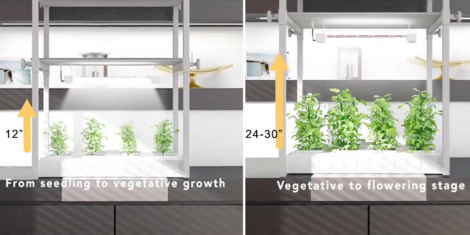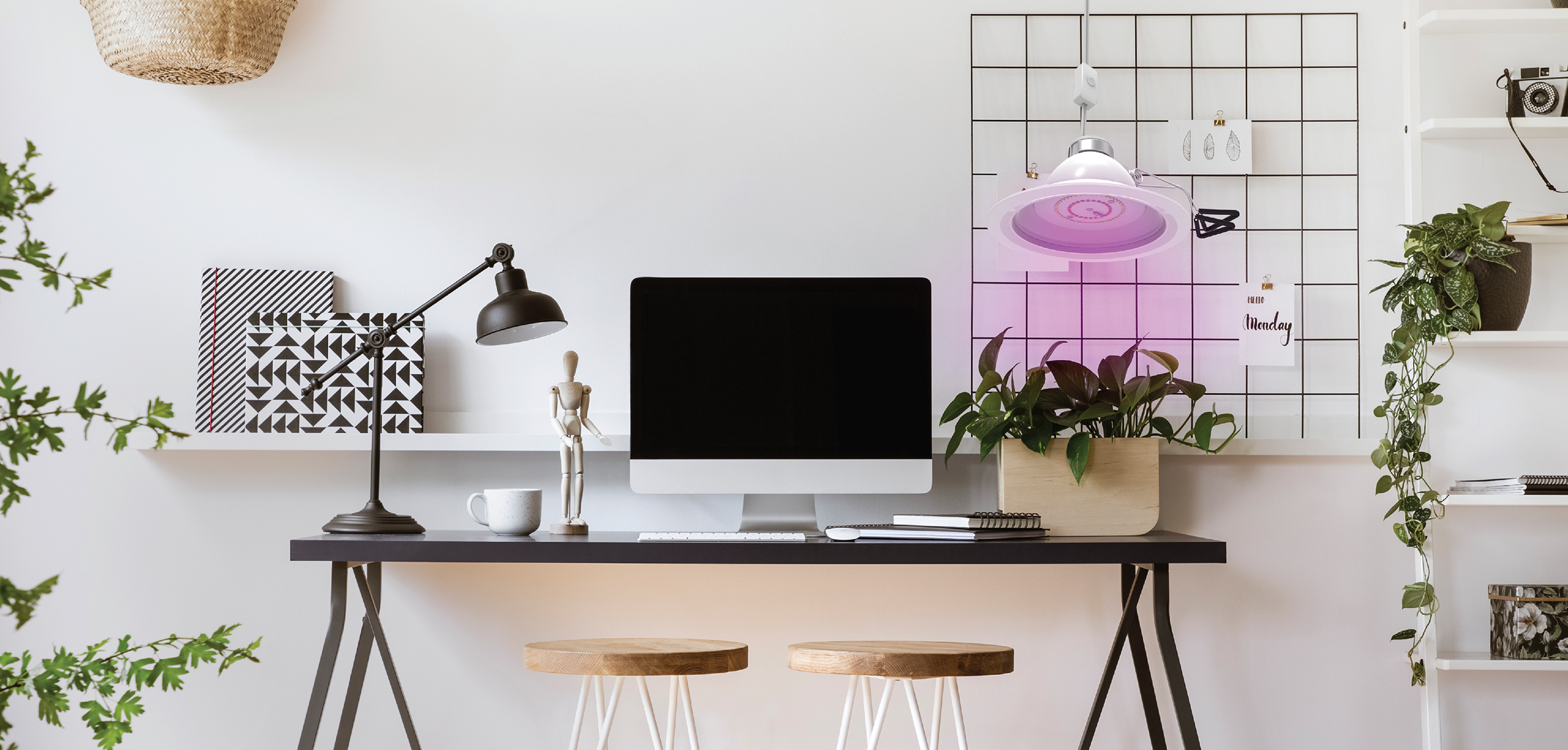So, you decided to plant an indoor garden. Now what? Starting an indoor garden is easy and keeping it alive is easier with the help of LED grow lights. Indoor gardening is the perfect hobby for all experience levels, and it is a great way to flex your green thumb this Spring. You can have access to fresh herbs and vegetables all year round, or add a little greenery or flowers to accent your décor. Here are tips to keep your indoor garden flourishing this Spring and beyond with the help of LED Grow Lights.
What to Grow
If you haven’t decided what to grow yet. The first thing to consider is whether you want to grow: fruits, vegetables, herbs, flowers, succulents, or green plants.

Grow Location
It’s no surprise that plants need sufficient sunlight and water to grow into healthy adult plants. While you may get access to water all year long, natural outdoor sunlight comes and goes depending on the season. This is where LED Grow Lights come in. Grow lights allow you to maintain plants in areas of your home that don’t get enough sunlight and you can even get access to out-of-season fruits and vegetables all year round. There’s also more flexibility as to where you can locate your indoor garden.

Types of Grow Lights
Feit Electric LED Grow Lights come in a wide selection of bulbs, tabletop lights, and fixtures.

Choosing the Right Grow Light
Choosing a grow light that best fits your growing needs might get a little overwhelming with so many available options. Here are a few questions to ask to make it easier on yourself.
1. How big is your grow space?
- One 2 ft. x 2 ft. fixture covers a 2 square area. If you have a larger area you’d like to cover, simply link two or more fixtures together (depending on the fixture). Keeping your plants' growth potential in mind be sure that you can accommodate the space they require as they grow.

2. Where do you want to grow?
- Bulbs are perfect for single pot plants and can easily fit into any existing table lamp or hanging pendant.
- Tabletop grow lights are small enough to fit on small surfaces and their sleek design fit with any home décor style.
- Fixtures allow for wider coverage when using shelving units or larger growing areas.
- Clamp grow lights provide more flexibility in your plant's location and allows for easy distance adjustments as your plants grow.

3. What do you want to grow?
- Full spectrum grow lights are the ideal for enhanced plant growth and are a perfect starting point for aspiring horticulturalists as they mimic natural sunlight to nourish your plants throughout the seedling, vegetation and flowering stages. Recommended for herbs, fruits, vegetables, leaf plants, succulents, cacti and flowers .
- Using red light enhances photosynthesis to encourage stretching for even light distribution and extending the flowering and fruiting stages in your plants allowing for higher yields and greater harvests. It is recommended to switch to a Red spectrum only during the flowering stages as plants grown under only red light can outgrow their space before they flower and over stretch. Red light is recommended for use during the flowering / fruiting stages of plants like tomatoes, peppers, flowers and more.
- Blue light increases the plants vegetative growth by regulating the plant's ability to exchange vital gases for photosynthesis slowing the plants stretching and encouraging the development of thick healthy stems, branches and leaves. Blue light is ideal for leaf plants and can be used with Red light for increased growth during flowering stages as the blue light can act as a regulator to prevent overstretching.
Grow Healthy Plants with LED Grow Lights
Now that you are ready to start your growing adventure, here are some operation and installation tips. Remember high-quality soil, nutrients and water are also important.
1. How far away to place with LED grow lights
- Flowering plants: hang grow lights 6 inches above initially and then raise to 18-24 inches above the canopy during the budding stage.

Herbs and leafy greens: Place lights 12 inches above your plants from seeding to two weeks of vegetative growth. Then raise to 24-30 inches allowing for an even distribution of light across the canopy.

2. How much light your plant needs
Though it depends on the individual plant, it is recommended to supply 18 hours of light and 6 hours of darkness throughout the vegetative stage. Once the plant begins to develop flowering buds switch the ON/OFF cycle to 12 hours of light/darkness. Some growers elect to extend the vegetative stage or flip to the flowering stage manually by staying on an 18 hour cycle or by switching to a 12 hour cycle to begin flowering.

There’s no excuse not to show off your green thumb this year. Get growing by following our easy tips and by checking out our wide range of LED Grow Lights. There’s a light available for every type of grower!





